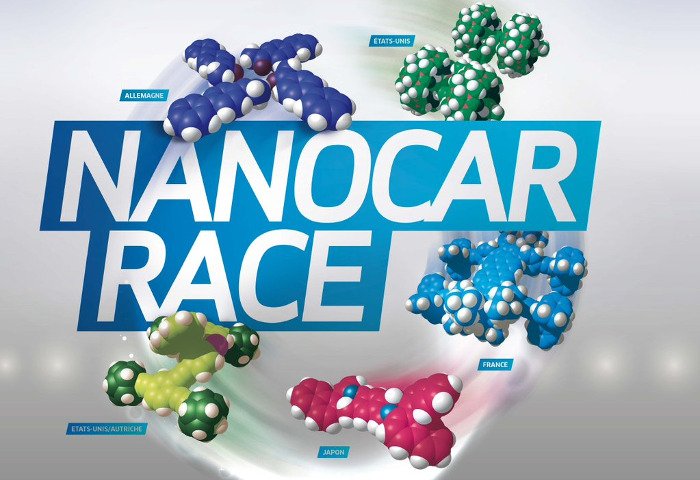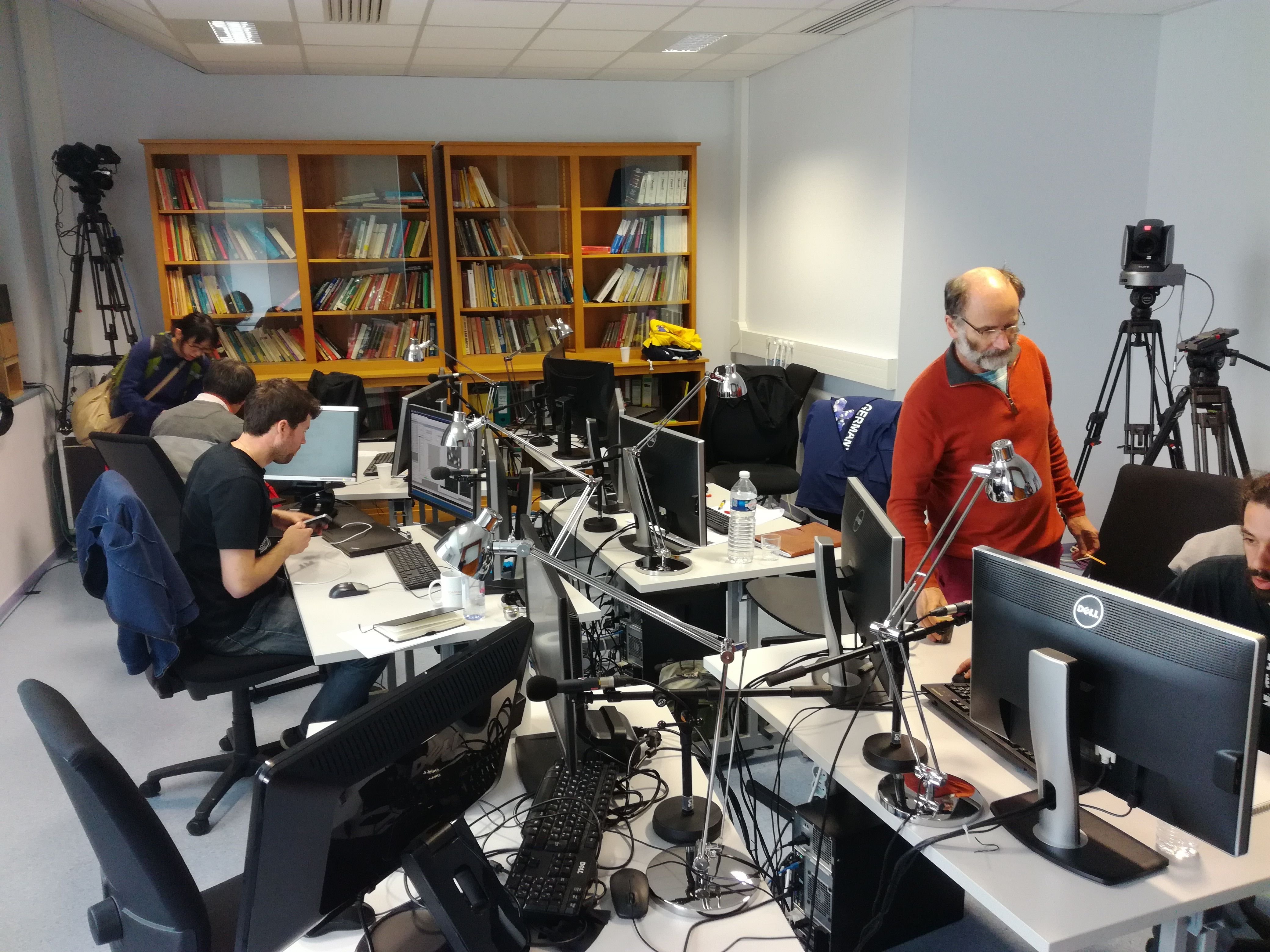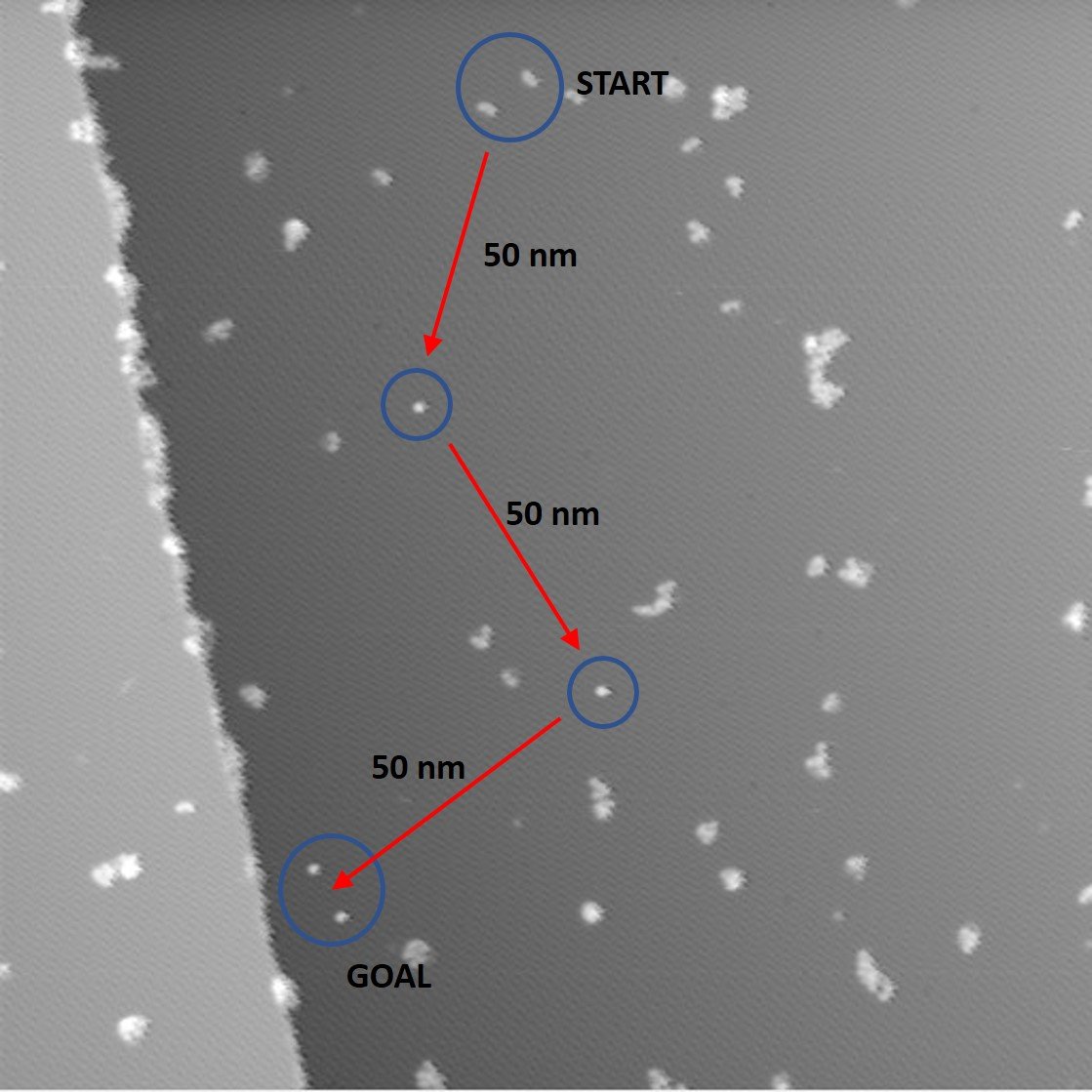With my first post about science I also want to take part in #suesas-sciencechallenge. I have to mention that most of my projects - including current ones - are subject to confidentiality. In order to obey this, I want to briefly dive into a completed, recently also published project:
_

The NanoCar Race!
_
This huge scientific project and competition took place 28th-29th of April 2017 in Toulouse, France and challenged scientist from all over the world to design, synthesize and drive the smallest cars in the world. The goal of this event was to publicly demonstrate how far we have come in nanotechnology and to strengthen discussions within the scientific community about which scientific challenges should be tackled next and how.
_

Crossing the Alps on my flight to Toulouse.
_
This event was organized over a period of roughly 4 years. After the worldwide announcement, interested academic research groups started to craft their nano-cars, tried to be able to drive and to improve them. - But was is considered as nano-car?
A nano-car is any type of molecule which can be moved in a controlled fashion without physically touching it. The movement has to be induced by injection of energy (in form of electrons) what in turn could propel a built-in nano-motor. Another opportunity is to use couloumb attraction/repulsion phenomena via applying very low, precise electric fields to the close viccinity of the molecule. Both the visualization of individual molecules and the manipulation (moving) of molecules is enabled by a very powerful miroscope:
a Scanning Tunneling Microscope
(short STM - more about this and how molecules can be driven in an upcoming post)
_

Applicants had to prove, that their nano-cars comply with the rules. Six teams were accepted and were allowed to participate in the first nano-car race: Germany, France, a collaboration team of U.S. Texas and Austria, Swiss, U.S. and Japan
_
The race of the molecules took place on smooth gold surfaces within STM probes, with one exception for the US/Austrian team. The nano-car of our collaboration team was too mobile on gold to be driven in a controlled manner. It therefore required a less noble surface, with which it can interact more and thus be braked to a controllable speed. This can be achieved by using a silver surface. Our competitors agreed on our request, but only with the restraint that we will have to travel a 50 % longer distance. So to complete the race, the teams had to race their nano-cars over a distance of 100 nm (150 nm for our team) within 29 h race time.
_

A snapshot in the control room of the pilots during the preparation phase on the day before the race.
_
Since the whole 36h race (29h racing + scheduled 7h of preparation of the race track and the nano car) took place within only two days without any official break each team had one pilot and one co-pilot. Nonetheless as the co-pilot of the US/Austrian team, I can tell you that it was a tremendous effort to stay focused and to continue working for such a long period of time without proper breaks. Already the smallest mistake could have resulted in the nano-car or even the whole race track being destroyed!
_

Overview of our race track on the silver surface. In the top blue circle to of our nano-cars "dipolar racer" are located. The next two blue circles mark artificially generated defects (small metal-atom-clusters) on the silver surface, which mark turning points. In the lowest circle two of these defects indicate the finish line.
_
If you want to see a video of our dipolar racer racing along the race track see:

but by being the only team in the world so far, which has managed to control the movement of a single molecule over a distance of 1 micrometre (1000 nm) within 29 h without touching it mechanically!
_
Fun-Fact: Although the whole event was a remarkable pioneering success in nanotechnology, it is Mother Nature, who is still the best chemist and physicist: Keep in mind that the tip of a living human hair covers a distance of 150 nm alone by its growth in under two minutes!
Since all of this was extensive work and development of new, very specific knowledge, there are many more interesting aspects I want to present in some of my next posts. So stay tuned! :)
Best,
mountain.phil28
PS: If you have any questions concering this topic, feel free to ask.
I will try to answer all your questions!
References:
Images #2, #4, #5 are owned by myself.
http://www.fredzone.org/le-cnrs-organise-la-premiere-course-de-molecules-voitures-897
(image #1)
http://cen.acs.org/articles/95/i19/Worlds-first-nanocar-race-crowns-champion.html
(image #3)
The video was generated by myself but is featured on various news pages like:
http://www.npr.org/sections/thetwo-way/2017/05/02/526605120/microscopic-cars-square-off-in-big-race
